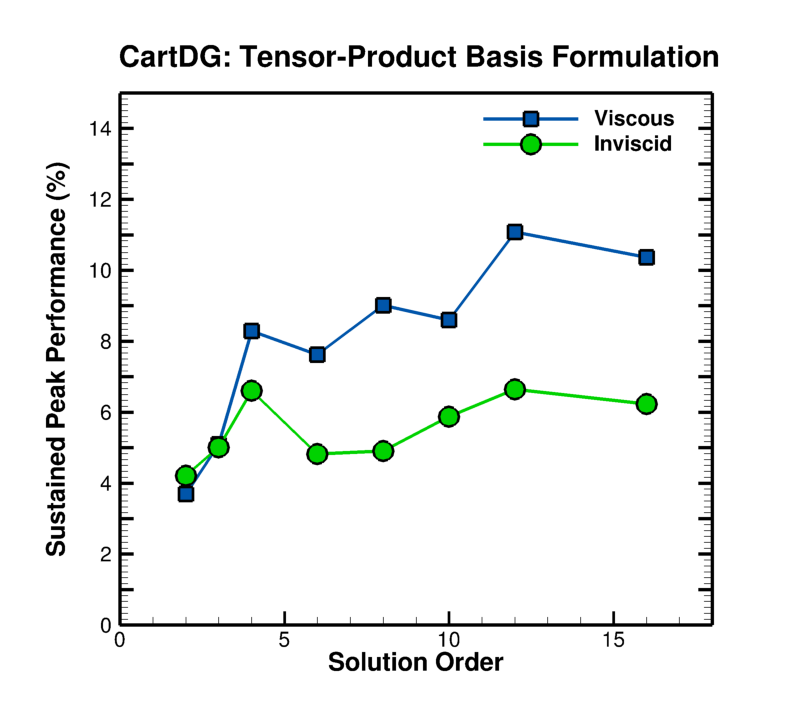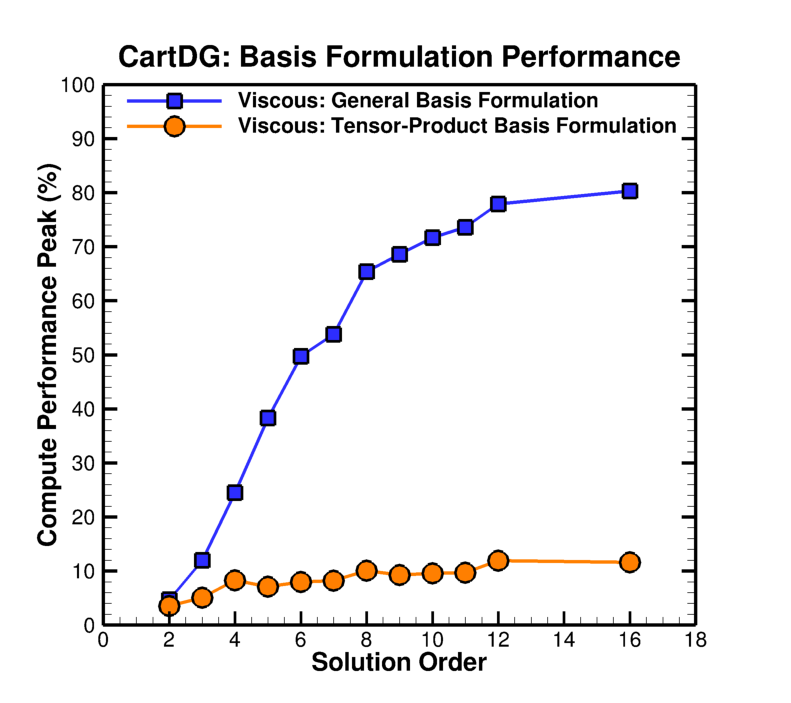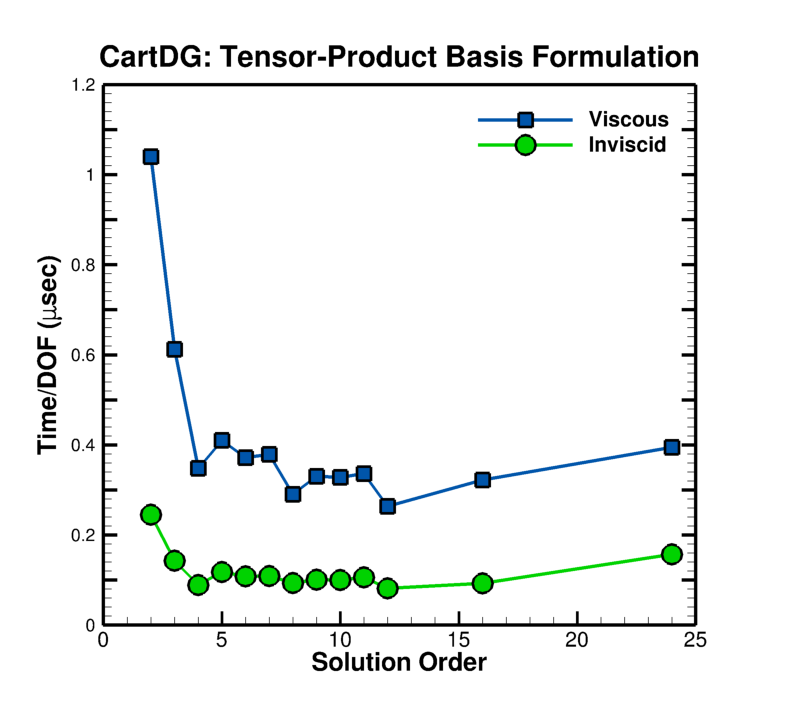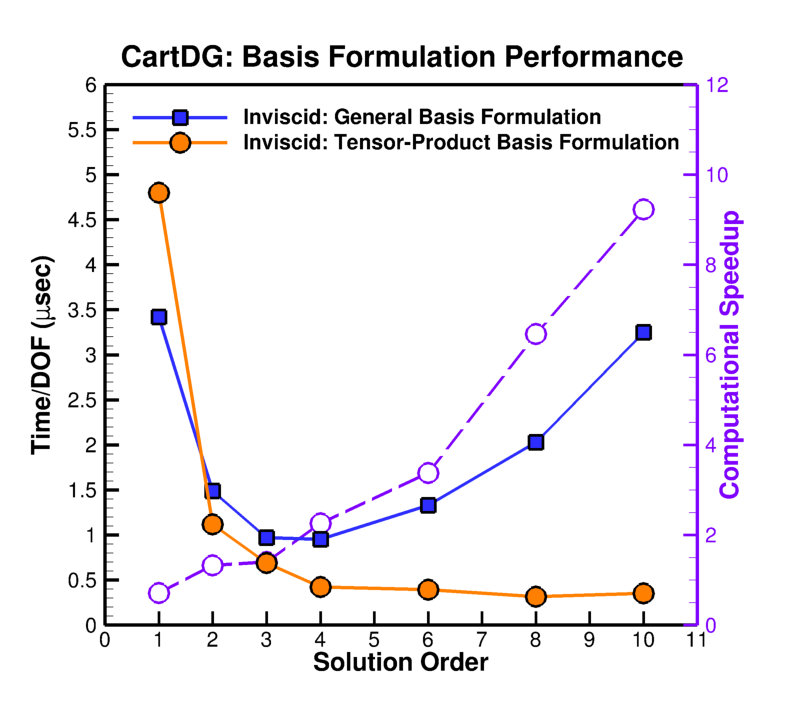dg4est
Learn more about high-order discretizations for the compressible Navier-Stokes equations with adaptive mesh refinement.
My primary research revolves around developing high-fidelity numerical methods for Computational Fluid Dynamics problems with applications to Wind Energy and Aerospace. This involves principally writing code de novo as the problems we target require leadership-class supercomputing capabilities. My research vision is to develop highly-scalable and highly-efficient algorithms coupling scientific computation with data-informed modeling suitable for leadership-class heterogeneous supercomputers and to facilitate industry-ready engineering simulations tools applicable to the fields of aerospace and renewable energy.
The primary software I’ve developed over the past five years in dg4est which is a discontinuous Galerkin method leveraging the p4est framework for managing and adapting the grid topology. dg4est is the primary off-body CFD solver within the WAKE3D framework and has been utilized in many applications. Some of the features of dg4est are outlined here.
dg4est
- 2D and 3D Simulations
- High-Order Spatial Discretizations: Discontinous Galerkin
- Nodal tensor-product basis functions: Lagrange polynomials (up to 24th order)
- Modal tensor-product basis functions: Legendre polynomials
- Quadrature Integration (collocation/over-integrable): Gauss-Legendre (2p+1 accuracy), Lobatto-Gauss (2p-1 accuracy)
- Kinetic energy-preserving scheme based on flux differencing: Pirozzoli, Kennedy & Gruber
- Riemann solvers: Lax Friedrichs, Roe (with entropy fix)
- Diffusion solvers: SIP, BR2
- Governing equations
- compressible Euler equations (inviscid)
- compressible Navier-Stokes equations (viscous)
- LES subgrid-scale models
- constant Smagorinsky
- dynamic Smagorinksy
- WALE
- Sources: gravity, Coriolis
- Boundary conditions: free-stream, slip wall (symmetry), non-slip wall, characteristic, total inlet, static pressure outlet, periodic
- High-Order Temporal Discretizations
- Explicit Time Stepping
- RK1: Forward Euler
- RK2: SSP (strong-stability preserving)
- RK3: SSP
- RK4: 3/8-rule
- Implicit Time Stepping (dual time stepping: RK-optimized smoothers)
- BDF-1
- BDF-2
- Space-Time DG (up to 10th order)
- Preconditioned FIRK 2-stage Gauss-Legendre
- Preconditioned FIRK 2-stage Radau IIA
- Explicit Time Stepping
- p-Multigrid Solution Convergence Acceleration (space-time, implicit, steady-state)
- Full Approximation Scheme (FAS)
- V-/F-/W-Cycling
- Acoustic Analysis
- Ffowcs-Williams Hawkings (FW-H) acoustic-analogy formulation
- Overset Simulation Infrastructure
- TIOGA interface
- In-situ Data Extraction
- points, lines, planes, volumes
- VisIt Libsim tnterface
- SENSEI interface
- VTK Visualization
- parallel VTU format (VisIt, paraview)
- High-order VTK Lagrange format (paraview)
- Post-processing
- LES SGS TKE
- Temporal statistics: mean, standard deviation, 95% confidence interval
- Reynolds stresses
- Proper Orthogonal Decomposition (POD)/Principal Component Analysis (PCA)
- MPI wall-clock time histogram viewer
- Analytical spatial error calculator (order of accuracy verification)
- Unit Testing (gtest framework) and Regresion Testing
Future Developments
- Release the code as open source via GitHub!
- GPU Implementation using OCCA: NVIDIA, AMD, Intel hardware
- Full GPU offload including AMR (dynamic)
- Mixed-element meshes (with AMR): tets, pyramids, prisms, hexes
- Boundary Representation (brep) incorporation for curved-mesh adaption
- Wall-Modeled Large Eddy Simulation
Unstructured High-Order Geometry
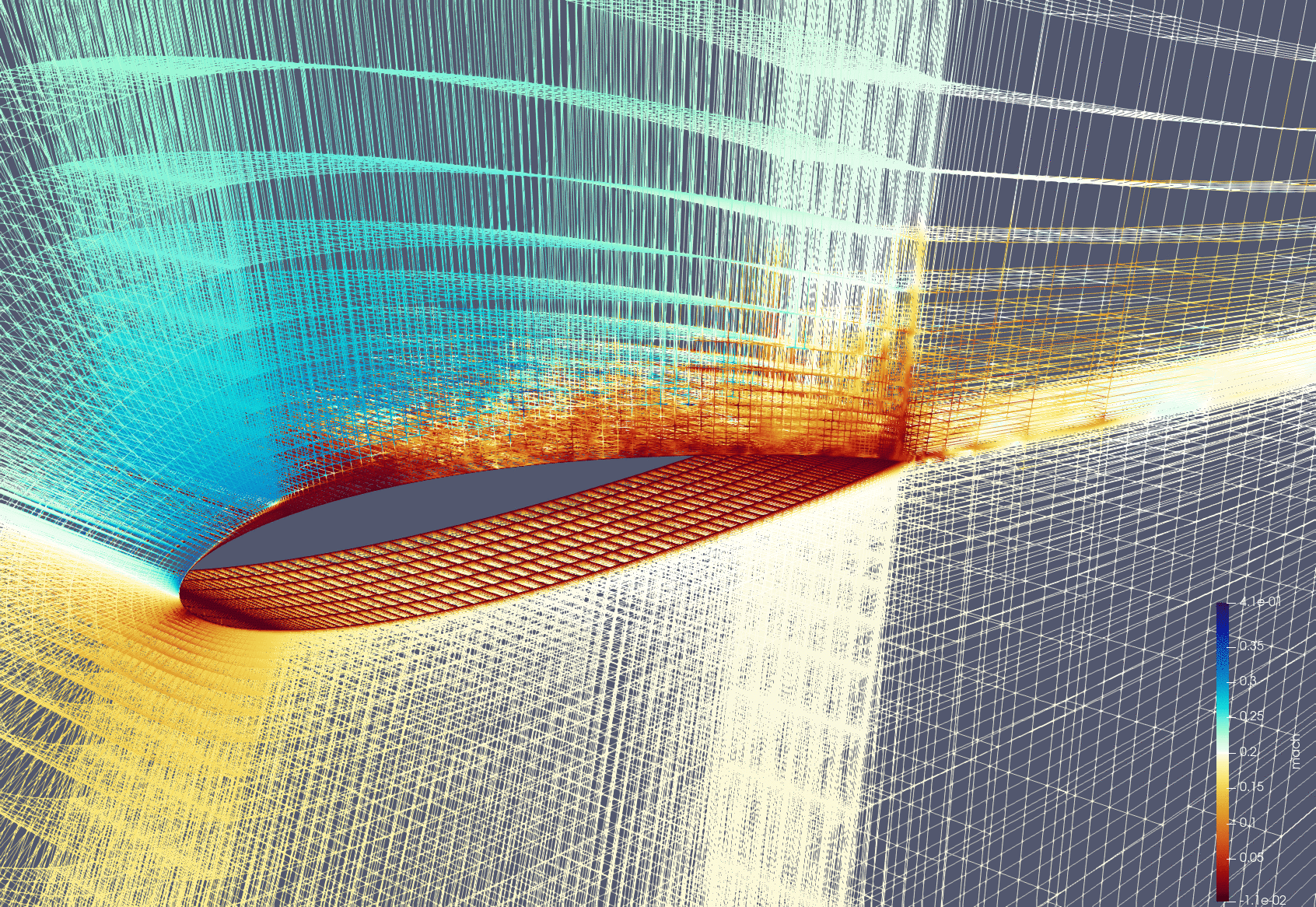
Adaptive Mesh Refinement
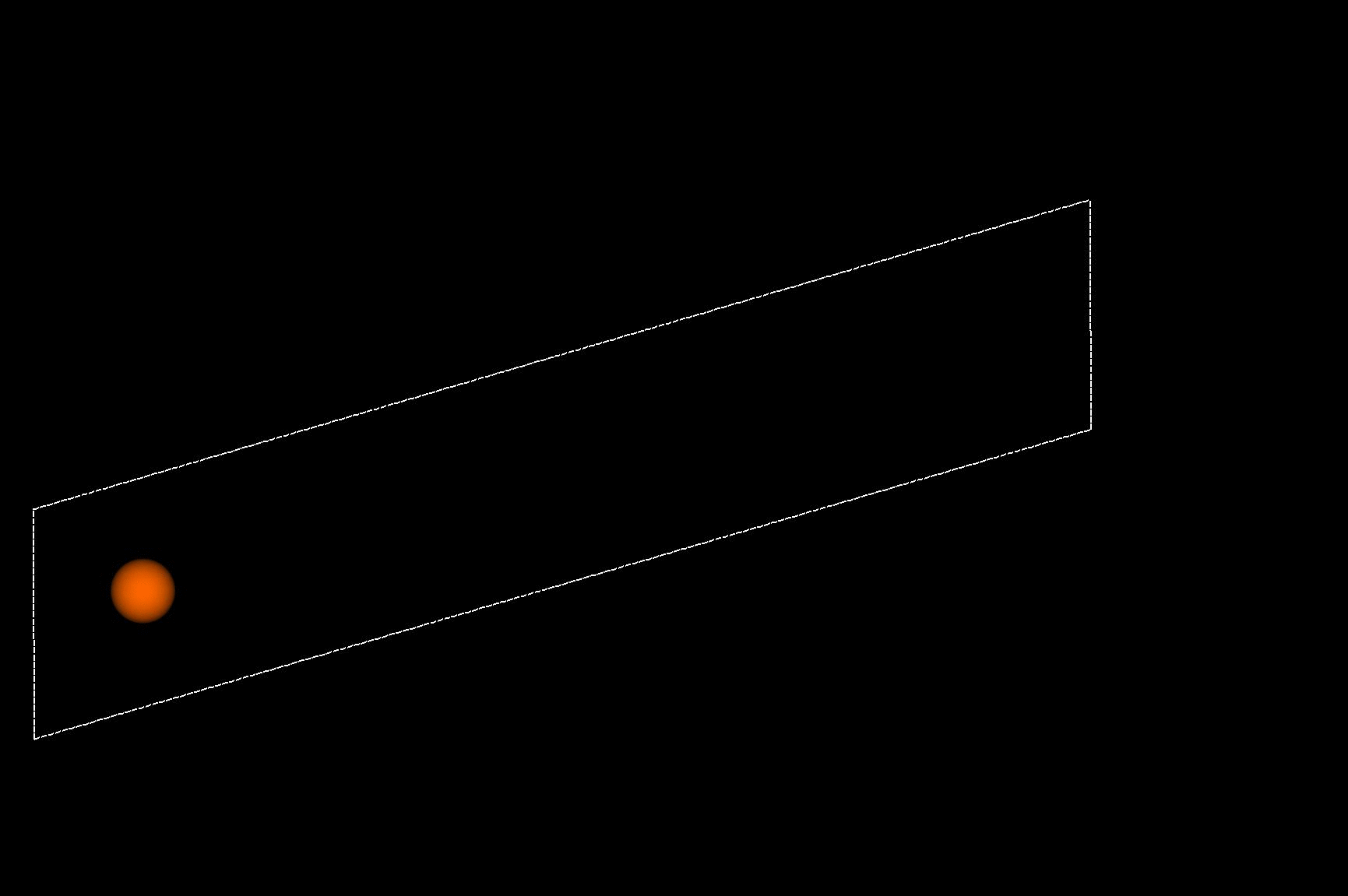
CartDG
dg4est utilizes a varible order hp discontinuous Galerkin implementation. The numerical FEM kernels in dg4est are carried over from my purely Cartesian DG solver known as CartDG. CartDG discretizes the compressible Navier–Stokes equations with Coriolis and gravitational forces. There are options for a constant or dynamic Smagorinsky Subgrid-Scale (SGS) Large Eddy Simulation (LES) model. The solver itself is designed for computational efficiency on Cartesian meshes and has been strong scaled to over 1 million MPI ranks on Argonne National Laboratory’s Mira Supercomputer as seen below.
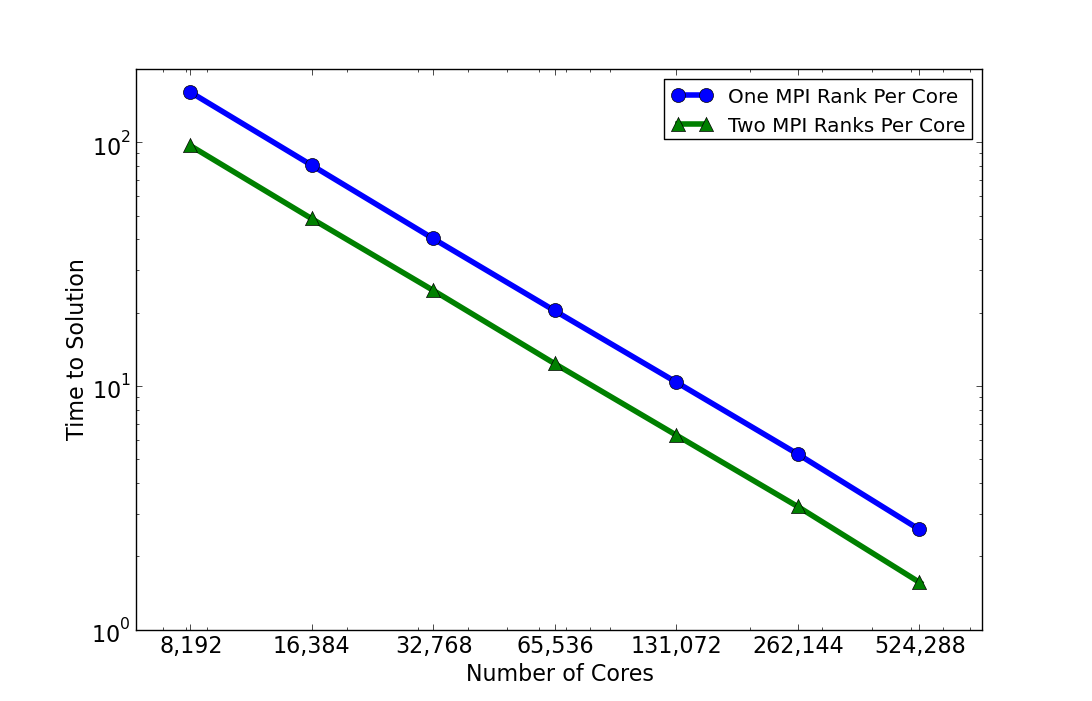
To demonstrate the computational efficiency of CartDG, several performance statistics for a wide range of orders of solution accuracy are provided. The sustained peak performance of the inviscid and viscous residual evaluations is shown below on an Intel Core i7-5960X Haswell-E processor with eight CPU cores, clock speed of 3.0 GHz, 4 GB of memory per core, and a theoretical peak performance of 384 GFLOPS (TauBench benchmark 5.25 seconds). The tensor-product DG formulation achieves roughly 12% sustained compute peak performance for evaluation of the residual of the compressible Navier–Stokes equations (viscous residual) at high solution orders of accuracy.
